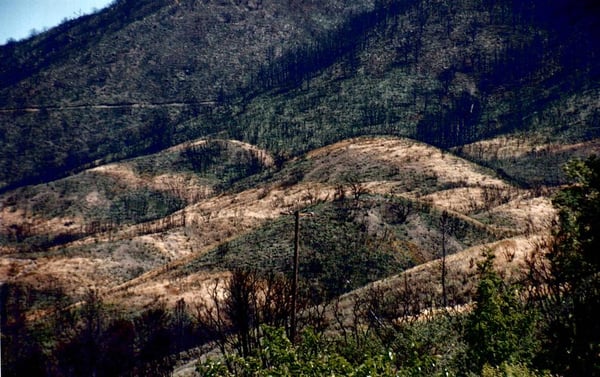2 min read
After A Wildfire: Hillside Erosion Mitigation
![]() Bobby Decker, Operations Specialist
:
January 7, 2020
Bobby Decker, Operations Specialist
:
January 7, 2020
If you’ve engaged with any Joffe resources, articles, or blog posts in the last year, there’s a good chance you read something about wildfires. We gave the topic a lot of attention because, well, many of the schools we support were faced with serious wildfires and all that comes with them - like air quality concerns, questions about whether to open or close, and elements of business continuity planning.
If you’re looking for additional resources on these or other topics, please reach out to us at your convenience. We are glad to be a partner in your recovery.
In today’s post, I want to focus on a unique aspect of wildfires that may be particularly relevant to some schools. Anyone who turned on the local news in California late last year was likely to see swaths of hillside burning or threatening to ignite. The striking images underscore a simple truth - the hillside or terrain that surrounds campus can help protect a school from wildfires, yes. But it can also become a threat that requires careful mitigation to protect and sustain a school community.

This information comes from Joffe’s direct work supporting schools in their recovery from wildfires in recent years. If a hillside suffered major burns and damage, the first priority must be re-establishing the “security of the hillside.” As the fire burned away ground cover and vegetation, it made the remaining soil more vulnerable to erosion. A school’s initial challenge once the site is safe to return to is to remove dead trees, rocks, and other burned items off of the hillside. From there, a likely next step is hydroseeding. This is the process where mulch and plants are spread all along the hillside to replace the protective layer that burned away. The practical purpose of hydroseeding is mirrored by the fact that it’s a visible process, letting the community know that there is a plan to recover.
Additional steps that a school may take to protect campus include adding chain-link fence and/or sandbags to reinforce areas of the hillside. These “velocity reducers” mitigate the damage that falling soil or objects could cause should the unfortunate occur. Every community (and every hill) is unique, so it’s important to acquire expert and informed advice on best practices in hillside mitigation.
In tandem with these anti-erosion efforts, effective hillside cleanup must visibly and vocally continue. Wildfires rarely leave a piece of land looking better than they found it. Immediate safety is paramount, but it will also be essential to make the site look much better (the “hydroseeding” discussed above is one part). This is an important step to signal that a community is returning to “business as usual” and helps ensure that the vast majority of students will return to school.
I’ve alluded to this already, but we can be more explicit here - part of hillside mitigation and overall recovery is public relations. An extensive remediation and repair process may perturb neighbors and require school leadership to do outreach or hold meetings where concerns can be voiced. The immediate school community should be kept up-to-date on progress and priorities, and of course leadership or a board of directors will be involved in the insurance process.
On that note, we strongly advise schools to document the entire remediation process. Take pictures of the site every day, note what services vendors commit to, and don’t be afraid to ask the same question five times if you don’t like the response. If a plan isn’t the best one for a school’s recovery, we can find a more effective way.
We also recognize that the recovery isn’t complete once the main thrust of the project has been finished. Any drains, fences, sandbags, or other tools used to protect the hillside and school need a plan for upkeep and monitoring. Debris should continue to be removed on a regular basis. Maintaining a healthy and happy relationship with the neighbors is also an ongoing process (although schools know that already). Of course, even with the new strategies and work on the hillside, it also remains an important variable to plan for in future emergency preparations.
If you'd like to speak with us about this piece or anything else, email "safety@joffeemergencyservices.com"

